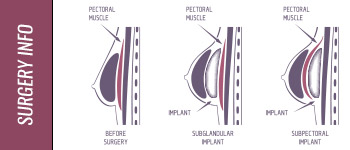The use of unwanted fat from one area of the body as an injection to improve another part of the body has been a popular idea among cosmetic surgery patients for years, but the results are temporary and the recommended applications limited. Over time the fat cells die off and in some cases leave behind scar tissue and other damage.
Fat injections in the breasts have been particularly discouraged. While a temporary improvement can be achieved, when the fat cells die off the resulting scar tissue and calcification interferes with breast cancer screening.
The use of stem cells has changed all of this. Stem cells and regenerative cells, derived from a patient’s own fat, can prevent the fat from dying off and the area collapsing. This is good news for breast cancer patients.
Early detection makes a partial mastectomy or lumpectomy an effective treatment. The new developments in fat injections make them appropriate and effective for breast reconstruction. Small areas can be filled in with the fat injections, and the normal contours of the breast restored. This can also help patients with tissue damage and loss due to radiation treatments, and women with breast deformities.
In the future, stem cells collected from fat may be used to regenerate many kinds of human tissue, even potentially regenerating damaged or diseased body parts. Researchers in Australia have successfully grown fully-functioning breasts in mice, using stem cells. Liposuction patients can now reserve their stem cells, derived from the removed fat, for use in future therapies as the technology develops. Cosmetic surgery today could provide the means for healing injuries and curing diseases later in life.
On June 1, 2006 Cytori Therapeutics, Inc. announced its treatment of three patients in a study of adult fat derived stem and regenerative cells for breast reconstruction. Cytori’s regenerative cell processing system rapidly extracts and concentrates stem and regenerative cells which can be used immediately, eliminating the need for a second procedure.
Fat injections will soon be a safe and effective alternative for breast reconstruction. Currently, fat injections are not recommended as a replacement for implants in breast augmentation, but this may be a possibility as well. Tests are being conducted to determine what impact such a large injection might have on cancer screening, and whether there could be other health risks.
Another alternative currently being researched is the use of stem cells to create natural tissue implants which will have more natural look and feel than implants used today and carry fewer risks.
If you are considering breast augmentation talk to your doctor about these advancements in cosmetic surgery today.




